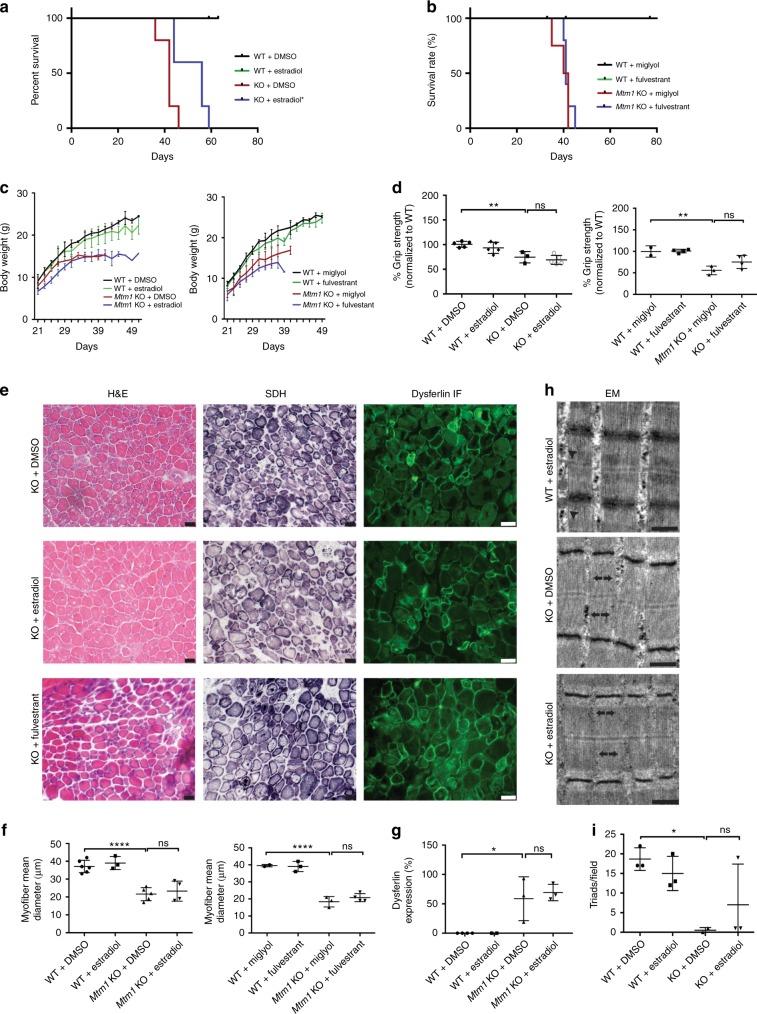Fig. 5.
Estradiol, but not fulvestrant, improves survival in Mtm1 KO mice. a 17β-estradiol treatment starting at 21 days (1 µg/day) improves survival from 42 days for KOs to 56 days (n = 5, *p < 0.05), with longest survival to 59 days. b Fulvestrant treatment starting at 21 days (1 mg/kg, n = 5) does not improve survival of Mtm1 KOs, with median survival of 41 days for both KO + fulvestrant (n = 5) and KO (n = 4) alone. c Mtm1 KO body weight is not restored with either estradiol or fulvestrant. d 17β-estradiol treatment of Mtm1 KOs does not improve muscle strength. Estradiol treated KOs (n = 5) mean grip strength is reduced to 69 ± 6%, untreated KOs to 74 ± 7% (n = 3) (**p = 0.0020 compared to WT), while estradiol treated WT are 93 ± 7% (n = 5). Values are normalized to WT + DMSO (100 ± 6%, n = 5). Fulvestrant treatment of KOs also does not improve muscle strength. Fulvestrant treated KOs (n = 4) mean grip strength = 75 ± 9%, untreated KOs = 56 ± 8% (n = 3) (**p = 0.0021 compared to WT), fulvestrant treated WT = 101 ± 8% (n = 4). Values normalized to WT + miglyol (100 ± 7%, n = 2). e Estradiol and fulvestrant treatment do not improve Mtm1 KO muscle structure. As with untreated KOs, muscle from KOs treated with either estradiol or fulvestrant show decreased myofiber size, increased mitochondrial aggregation, and abnormal distribution of dysferlin staining. f–i Quantification of muscle structural parameters. There was no significant change in Mtm1 KO myofiber size with estradiol or fulvestrant treatment f, and no significant change in dysferlin distribution g or triad number with estradiol treatment. The full enumeration of all data points is presented in Supplementary Table 3. Statistical analyses were conducted by two-way ANOVA, followed by Tukey’s multiple comparisons post-test or Fisher’s least common differences post-test. For direct two sample comparison, unpaired, parametric two-tailed Student's t-test was performed. Scale bars = 20 µm

